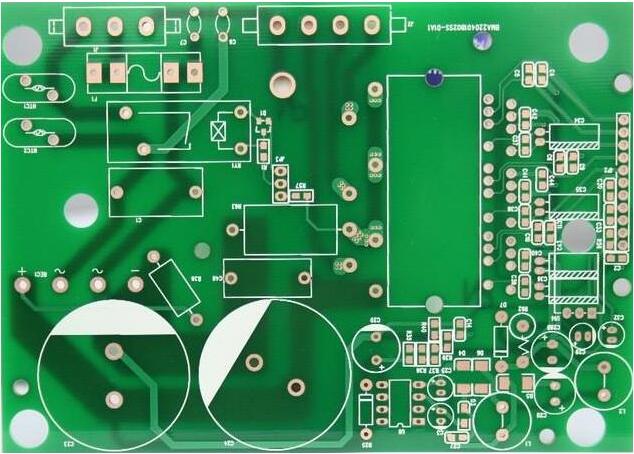Resin plug holes are filled in various types of holes, such as mechanical through holes, mechanical blind buried holes, etc., using conductive or non-conductive resin through printing and using all possible methods to achieve the purpose of plug holes.

The purpose of resin plug holes
After filling various blind buried holes with resin, it is beneficial for the vacuum reduction of lamination.
2. After resin filling, it can avoid surface depression caused by insufficient filling of laminated adhesive, which is beneficial for fine circuit fabrication and characteristic impedance control.
3. It can effectively utilize three-dimensional space and achieve any inter-layer interconnection through hole stacking technology.
4. By designing patches on holes, higher-density wiring can be achieved.
5. It can eliminate impurities from entering the through-hole or avoid being entangled in corrosive impurities.
The importance of resin plug holes for HDI PCB
1) Blind hole and buried hole circuit boards require resin plug holes during the processing. HDI PCB processing uses resin plug holes, which are often used for BGA parts. Traditional BGA may do VIA between PAD and PAD to the back for wiring. However, if the BGA is too dense to allow VIA to go out, it can be directly drilled from PAD to do VIA to another layer for wiring, and then the holes can be filled with resin and plated with copper to become PAD. If VIA is only done on PAD without resin plug holes, it easily causes tin leakage, short circuits on the back, and empty soldering on the front.
2) The inner layer HDI resin plug holes are widely used in HDI products to meet the design requirements of thin dielectric layers in HDI products.
3) For blind buried hole products with embedded hole design for inner HDI, the process of adding inner HDI resin plug holes often needs to be added due to the thin design of the intermediate bonding medium.
4) Some blind hole products cannot be filled with adhesive due to the thickness of the blind hole layer being greater than 0.5mm. Resin plugs are also needed to fill the blind holes to avoid the problem of copper-free holes in subsequent processes.
5) Use resin to plug the buried holes of the inner layer HDI, and then press it in. This process balances the contradiction between the thickness control of the pressed medium layer and the design of the inner HDI buried hole-filling adhesive.
The effect of resin plug holes on PCB
1. Fill the PCB holes. PCB resin plug holes can be used to fill the interlayer, drill holes, and solder caps on circuit boards, thereby preventing potential environmental factors and chemical substances from affecting the circuit, while also reducing possible noise and interference in the circuit.
2. Isolate different circuit layers. By filling the PCB resin plug holes between the various layers of the PCB, a reliable isolation layer can be formed in the circuit board, which can improve the performance and stability of the entire PCB, making it very important for certain high-performance application scenarios.
3. Improve the mechanical strength of the circuit board. PCB resin plug holes can also be used to enhance the mechanical strength of PCBs. With the continuous advancement of technology and the miniaturization of electronic products, PCB circuits are becoming increasingly thin. Therefore, more plug holes are needed to offset processing back pressure and improve the strength and stability of PCBs.
4. Improve durability and corrosion resistance. PCB resin plug holes can be used in conjunction with alloy protective layers on circuit boards to improve their lifespan.
The application of resin plug-hole technology in PCBs is becoming increasingly widespread, especially in multi-layer circuit boards with high layers and high precision. Use resin plugs to solve a series of problems that cannot be solved by using green oil plugs or pressure-filled resins.